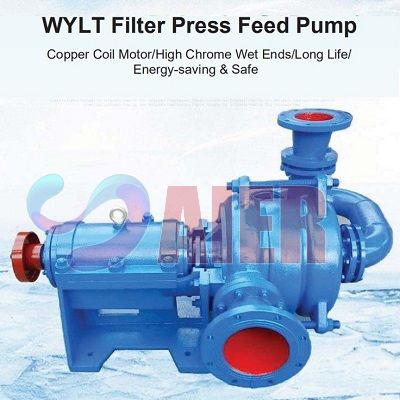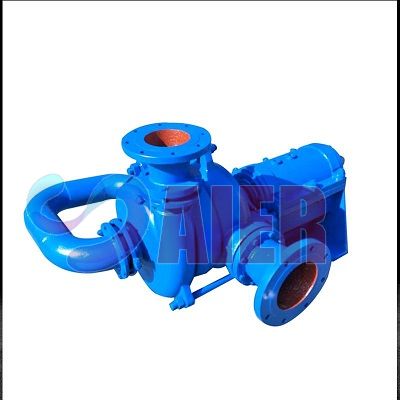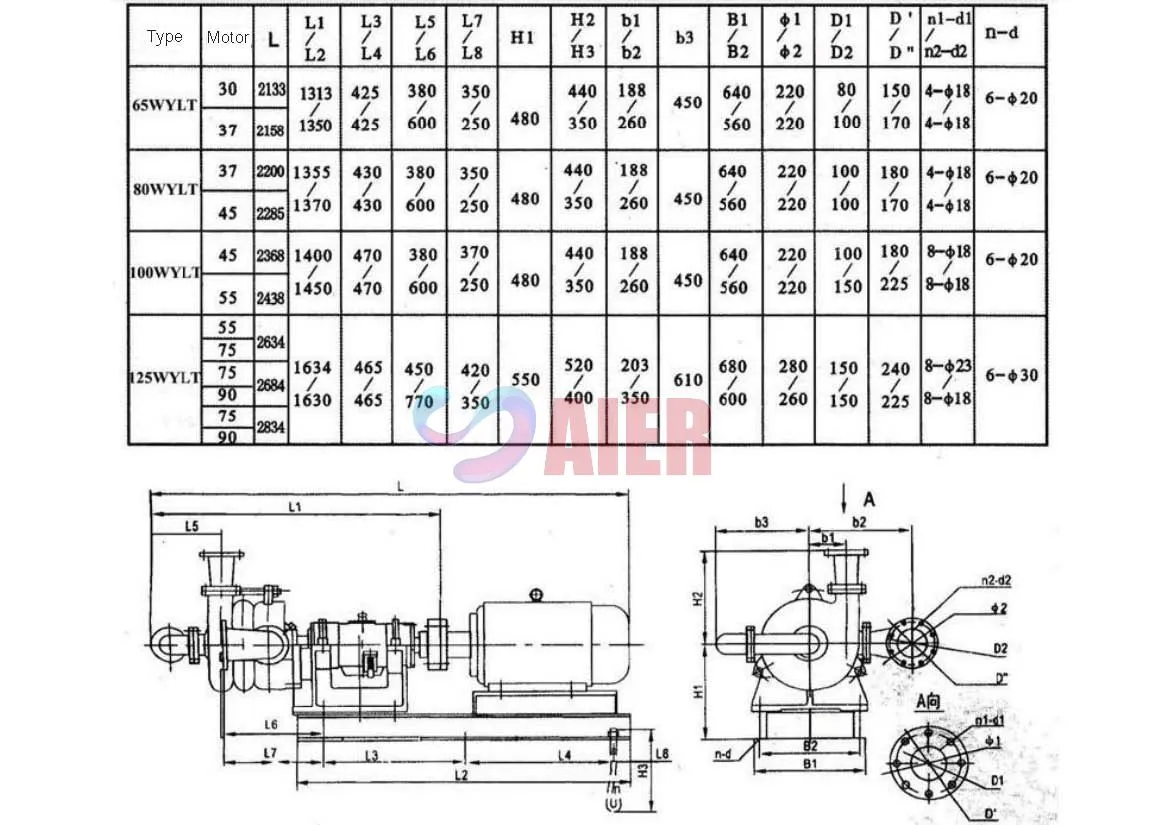Sep . 10, 2025 08:40 Back to list
Your Submersible Well Pump Manufacturer | Durable & Efficient Solutions
Introduction to Submersible Well Pump Manufacturing Excellence
In the realm of fluid dynamics and water management, the submersible well pump stands as a critical component, enabling efficient water extraction from deep underground sources. Its design, which allows for full immersion in the fluid it pumps, offers distinct advantages in terms of efficiency, noise reduction, and priming capabilities. A leading submersible well pump manufacturer plays a pivotal role in diverse industries, from agriculture and municipal water supply to mining and industrial applications, by engineering solutions that meet stringent performance and reliability demands. This article delves into the intricate world of submersible pump manufacturing, exploring industry trends, technical specifications, application versatility, and the unwavering commitment to quality and service that defines top-tier producers.
Advanced Manufacturing Process Flow
The journey from raw material to a high-performance submersible pump is a testament to precision engineering and rigorous quality control. As a reputable manufacturer of submersible pump, the process adheres to international standards to ensure optimal product integrity and longevity.
Schematic Steps of Submersible Pump Manufacturing:
- 1. Design & Engineering: Utilizing advanced CAD (Computer-Aided Design) and CFD (Computational Fluid Dynamics) software, engineers optimize pump hydraulics, mechanical structures, and motor efficiency. Material selection is critical, focusing on corrosion resistance and strength.
- 2. Material Sourcing & Preparation: High-grade materials are meticulously selected, including Stainless Steel (SS304, SS316, Duplex Stainless Steel for aggressive media), cast iron, bronze, and engineering polymers. These materials are chosen for their superior corrosion resistance, abrasion resistance, and mechanical strength, crucial for extended service life in harsh environments.
-
3. Component Manufacturing:
- Casting: Impellers, diffusers, and pump casings are precisely cast using sand casting or investment casting techniques. This ensures intricate geometries and excellent surface finish for optimal hydraulic performance.
- Forging: Components requiring exceptional strength, such as certain shafts or connectors, undergo forging to enhance their mechanical properties and fatigue resistance.
- CNC Machining: Critical components like pump shafts, seal housings, and motor parts are machined with high precision using CNC (Computer Numerical Control) equipment, ensuring tight tolerances and perfect fit. This is vital for the longevity of rotating parts.
- Motor Winding & Assembly: High-efficiency motors are wound with copper coils, insulated, and integrated into sealed casings to prevent water ingress.
- 4. Assembly: Multi-stage pump sections are carefully stacked, impellers are balanced, and bearings, seals, and the motor unit are integrated. Advanced sealing technologies (e.g., mechanical seals, double mechanical seals with oil barriers) are employed to ensure watertight integrity.
-
5. Testing & Quality Control: Every pump undergoes rigorous testing.
- Hydrostatic Testing: To verify casing integrity under pressure.
- Performance Curve Testing: Measuring flow, head, power consumption, and efficiency against design specifications, adhering to standards like ISO 9906 and ANSI/HI 11.6.
- Electrical Testing: For motor insulation, resistance, and operational parameters.
- Vibration Analysis: Ensuring smooth operation and identifying potential defects.
- 6. Surface Treatment & Packaging: Pumps are often treated with protective coatings (e.g., epoxy paint, ceramic coatings for enhanced corrosion/abrasion resistance) and carefully packaged for safe transit.
The typical service life of a well-manufactured submersible pump ranges from 10 to 20 years with proper installation and routine maintenance. Key advantages include significant energy saving due to optimized hydraulic design and high-efficiency motors, as well as superior corrosion resistance through material selection. Target industries encompass petrochemicals, metallurgy, municipal water supply & drainage, agriculture, and mining, where these pumps deliver reliable performance even in challenging conditions.
Industry Trends in Submersible Pump Technology
The market for submersible pumps is dynamic, driven by global demand for efficient water management and infrastructure development. As a leading submersible water pump manufacturer, continuous innovation is key.
- Energy Efficiency & Smart Controls: There's a strong push towards IE3/IE4 efficiency class motors and integrated Variable Frequency Drives (VFDs) to optimize power consumption. Smart monitoring systems, often incorporating IoT (Internet of Things) capabilities, allow for real-time performance tracking, predictive maintenance, and remote control, reducing operational costs and downtime. This is particularly relevant for an electrical submersible pump manufacturer focused on sustainability.
- Advanced Materials: The use of highly corrosion-resistant and abrasion-resistant materials, such as Duplex and Super Duplex Stainless Steels, hardened cast iron, and ceramic coatings, is increasing. This extends pump life in aggressive media like saltwater, corrosive chemicals, or abrasive slurries.
- Modularity & Customization: Manufacturers are offering more modular designs, allowing for easier maintenance, replacement of specific components, and greater flexibility for customized solutions to meet specific application requirements.
- Sustainability & Environmental Compliance: Growing environmental regulations are driving demand for pumps with lower noise emissions, reduced carbon footprint, and enhanced resistance to pollutants, ensuring compliance and long-term viability.

Key Technical Specifications and Parameters
Understanding the technical specifications is paramount for selecting the right pump. A reliable centrifugal submersible pump manufacturer provides detailed data sheets for each model. Here’s a typical overview of parameters for a high-performance submersible well pump:

Versatile Application Scenarios
Submersible pumps are indispensable across a multitude of industries due to their ability to operate silently and efficiently beneath the fluid surface.
- Water Supply & Irrigation: Extracting potable water from deep boreholes for municipal, residential, and agricultural irrigation systems. Their reliability makes them a cornerstone for stable water distribution.
- Mining & Construction Dewatering: Essential for removing groundwater from open pits, underground mines, and construction sites, ensuring safe and operational environments. Heavy-duty models can handle abrasive slurries.
- Industrial Applications: Used for process water supply, cooling water systems, and effluent transfer in manufacturing plants, power stations, and petrochemical facilities.
- Sewage & Wastewater Management: Designed to handle high-solids content, a specialized submersible sewage pump manufacturer produces robust pumps for municipal sewage lift stations, industrial wastewater treatment, and flood control.
- Oil & Gas: Electrical Submersible Pumps (ESPs) are widely used in upstream oil and gas production for artificial lift, enhancing oil recovery from wells.

Technical Advantages of High-Quality Submersible Pumps
The inherent design of submersible pumps offers significant operational and technical benefits:
- Self-Priming Capability: Being submerged, these pumps never lose prime, eliminating the need for external priming systems and ensuring immediate operation.
- High Efficiency: The direct coupling of the motor and pump, along with the cooling effect of the surrounding fluid, leads to better motor efficiency and overall hydraulic performance.
- Reduced Noise & Vibration: The fluid medium acts as a sound and vibration dampener, resulting in exceptionally quiet operation, ideal for residential or noise-sensitive areas.
- Space-Saving & Compact Design: Eliminates the need for a separate pump house, saving valuable space and simplifying installation.
- Corrosion & Abrasion Resistance: High-quality materials and coatings protect internal components from harsh operating conditions, extending service life and reducing maintenance.
- Flood Resilience: Designed to operate effectively even when completely submerged, offering critical reliability during flooding events.

Vendor Comparison: Choosing the Right Submersible Well Pump Manufacturer
Selecting the right supplier is crucial. A thorough comparison of potential vendors, focusing on various performance and service metrics, ensures the best return on investment.

Customized Solutions for Unique Challenges
Standard pumps often cannot address every unique operational challenge. A premier submersible pump part manufacturer offers comprehensive customization options to ensure optimal performance in specific applications.
- Application-Specific Hydraulics: Tailoring impeller and diffuser designs to achieve precise flow and head requirements, maximizing efficiency for the exact duty point.
- Material Adaptations: Custom material selections for extreme pH levels, high chloride content, abrasive solids, or elevated temperatures (e.g., Hastelloy, Titanium, specific ceramic linings).
- Advanced Sealing Systems: Designing specialized mechanical seals, gland packing arrangements, or barrier fluid systems for hazardous or critical media.
- Integrated Control Systems: Developing bespoke control panels with VFDs, soft starters, remote monitoring capabilities, and integration into existing SCADA (Supervisory Control and Data Acquisition) systems.
- Explosion-Proof (ATEX) Designs: For operations in potentially explosive atmospheres, pumps are designed and certified to meet stringent safety standards.

Application Case Studies & Customer Feedback
Real-world applications highlight the efficacy and reliability of well-engineered submersible pumps. Here are examples from a prominent china submersible pump manufacturer:
Case Study 1: Municipal Water Supply Upgrade
A major municipality faced declining well yields and increasing energy costs with their aging surface pumps. We provided a series of high-efficiency 8-inch submersible well pumps (Model SS-200/150, 45kW) for six boreholes, each delivering 200 m³/h at 150m head. The pumps, constructed with SS316 for enhanced corrosion resistance, were integrated with smart VFDs.
Outcome: The municipality reported a 28% reduction in energy consumption within the first year and significantly improved water pressure and reliability across their network. System uptime increased by 15%, reducing maintenance interventions.
Case Study 2: Industrial Dewatering in an Iron Ore Mine
An open-pit iron ore mine struggled with constant groundwater ingress and abrasive slurry conditions, leading to frequent pump failures. We deployed heavy-duty submersible slurry pumps (Model SL-300, 110kW), designed with high-chrome alloy impellers and agitators, capable of handling solids up to 80mm and flow rates up to 500 m³/h at 40m head.
Outcome: The new pumps demonstrated exceptional resistance to abrasion, extending Mean Time Between Failures (MTBF) by over 200%. The mine experienced stable dewatering operations, significantly reducing production downtime and spare parts expenditure.
Customer Feedback:
"The submersible pumps provided by Aier PUMPS have been incredibly reliable for our agricultural irrigation project. The energy savings are noticeable, and their technical support team was instrumental during installation. We appreciate the robust build quality."

Frequently Asked Questions (FAQ)
Q1: What materials are best for corrosive well water?
A: For corrosive well water, we highly recommend pumps constructed from SS316 (Stainless Steel 316), Duplex Stainless Steel, or Super Duplex Stainless Steel. These alloys offer superior resistance to chloride-induced corrosion and acidic conditions compared to standard SS304.
Q2: How often should a submersible pump be serviced?
A: The service interval depends on the application, fluid properties, and operating hours. For critical applications, annual inspection is advisable. Generally, a comprehensive check every 2-3 years, or after 8,000-10,000 operating hours, is recommended. This includes checking seals, bearings, and motor windings.
Q3: Can submersible pumps handle solids?
A: Yes, specific designs like vortex or channel impellers are engineered for handling solids. For abrasive slurries, pumps are fitted with hardened components (e.g., high-chrome impellers) to resist wear. A quality submersible pump spares manufacturer can provide the correct replacement parts.
Q4: What is the typical lead time for a custom submersible pump?
A: Standard models typically have a lead time of 2-4 weeks. For highly customized pumps, lead times can range from 8-16 weeks, depending on material sourcing and complexity of engineering modifications. We strive for transparent communication throughout the fulfillment process.
Q5: What warranty and after-sales support do you offer?
A: We offer a standard warranty of 24 months from the date of shipment or 18 months from installation (whichever comes first), covering manufacturing defects. Our after-sales support includes 24/7 technical assistance, readily available spare parts, and optional on-site commissioning and maintenance services through our global network of trained technicians.

Conclusion
The demand for reliable, efficient, and robust submersible pumping solutions continues to grow across industries worldwide. As a premier submersible well pump manufacturer, our commitment extends beyond merely producing equipment; it encompasses delivering comprehensive fluid management solutions. By integrating cutting-edge technology, adhering to rigorous quality standards, and offering unparalleled customer support, we empower businesses and communities to manage their water resources effectively and sustainably. Our expertise in design, manufacturing, and application engineering ensures that every pump delivers optimal performance, longevity, and peace of mind.
References
- Hydraulic Institute Standards. (2020). ANSI/HI 11.6: Rotodynamic Submersible Pumps for Hydraulic Performance, Hydrodynamic Testing, and Materials.
- International Organization for Standardization. (2018). ISO 9906: Rotodynamic pumps - Hydraulic performance acceptance tests - Grades 1, 2 and 3.
- United States Environmental Protection Agency. (2010). Energy Efficiency and Cost Saving Opportunities for Wastewater Treatment Plants.
- Pump Industry Magazine. (Various Issues). Industry Trends and Innovations in Submersible Pumping Technology.
-
Essential Guide to FGD Pump Supplies – Efficiency and Sustainability for Industrial Emission Controls
NewsNov.24,2025
-
Leading FGD Pump Manufacturers for Reliable Flue Gas Desulfurization Solutions
NewsNov.24,2025
-
Reliable FGD Pump Manufacturer China | Durable & Cost-effective Solutions
NewsNov.23,2025
-
Reliable fgd Pump Manufacturer Solutions for Emission Control | Aier Pumps
NewsNov.23,2025
-
Explore Advanced FGD Pump Factory Solutions for Cleaner Power Plants
NewsNov.22,2025
-
Reliable & Efficient FGD Pump Chinese Supplier for Cleaner Energy Solutions
NewsNov.22,2025
